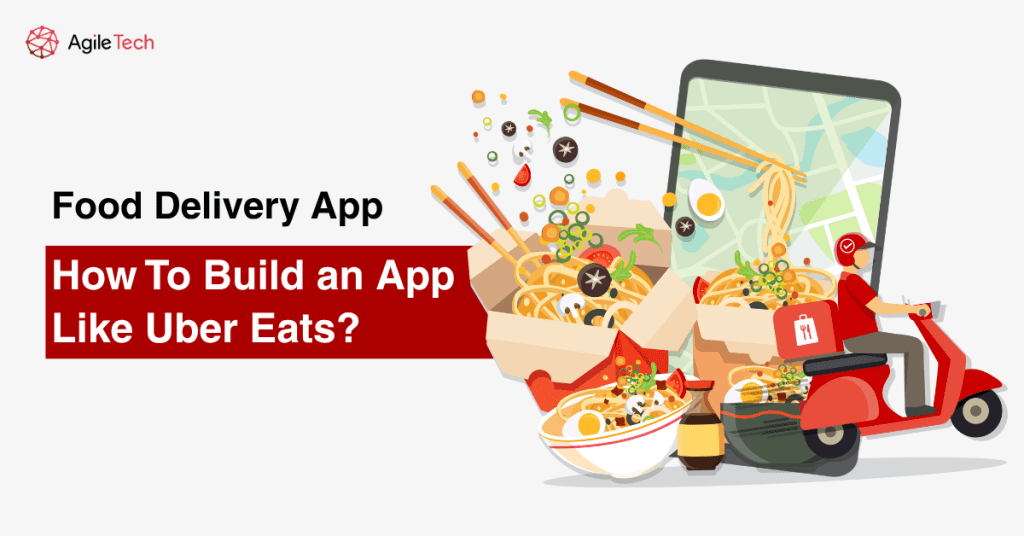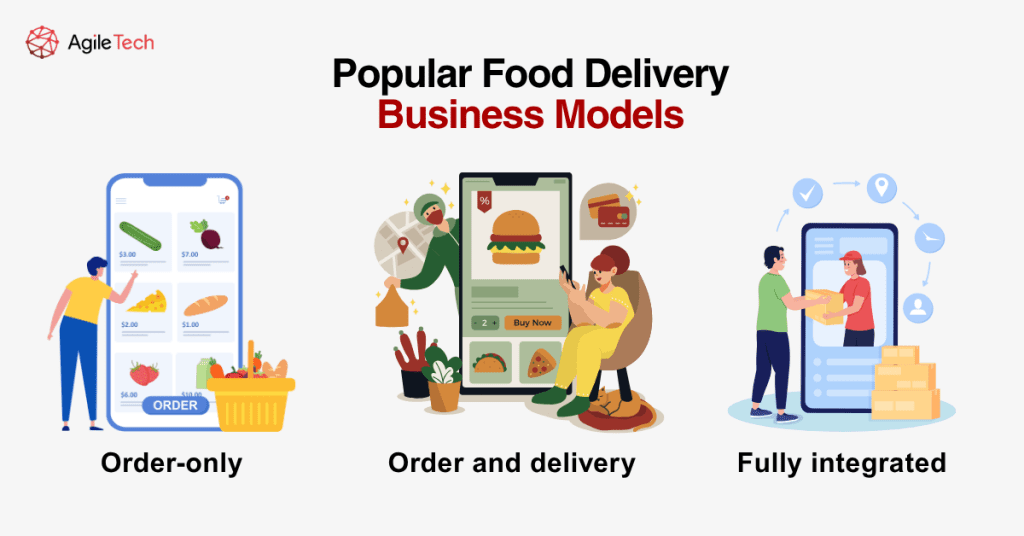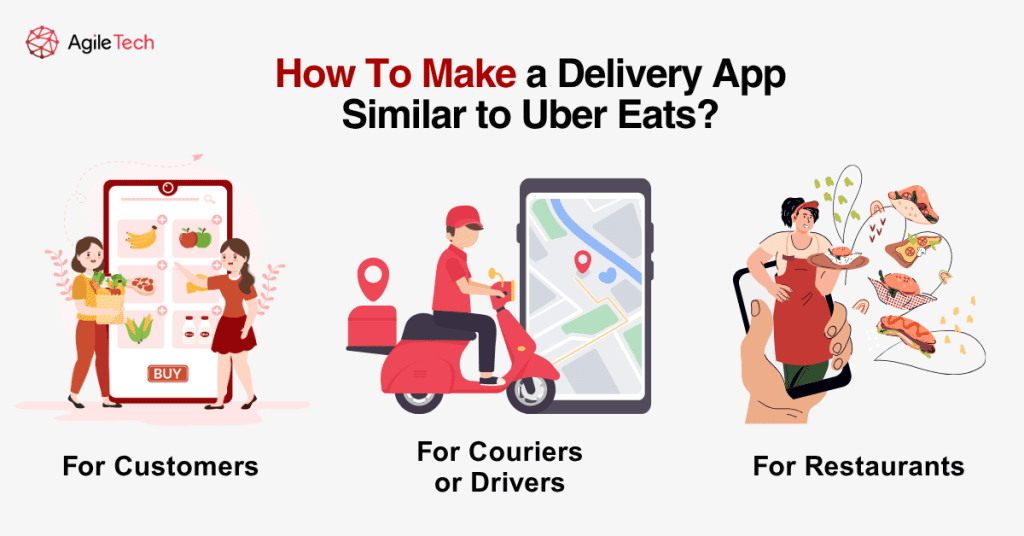Food Delivery App: How To Build an App Like Uber Eats?
The food delivery industry has transformed how people interact with restaurants and access meals. With the rapid rise of platforms like Uber Eats, DoorDash, and Grubhub, customers can now browse menus, place orders, and enjoy restaurant-quality food without leaving their homes. This convenience has opened massive opportunities for businesses and entrepreneurs to develop similar delivery platforms tailored to their target markets.

If you’re considering building a food delivery app like Uber Eats, there are several essential aspects you must understand. From choosing a business model and revenue strategy to implementing the right technology and estimating development costs, this guide will walk you through everything you need to know.
1. Popular Food Delivery Business Models
Before diving into development, it’s crucial to define your business model. This decision will shape your operational strategy, pricing, user experience, and long-term scalability.

The first model is the “order-only” platform. In this approach, the app functions primarily as a marketplace that connects customers with restaurants. Users can browse, place orders, and make payments, but the actual delivery is handled by the restaurant itself. This model is relatively simple and cost-effective to launch since it requires no logistics infrastructure. However, it provides limited control over the customer experience, especially in the delivery phase, which can affect retention and satisfaction.
The second and more popular model is the “order and delivery” platform. This is the model used by Uber Eats and similar apps. The platform facilitates both ordering and delivery by partnering with independent drivers or couriers. It offers a more seamless and controlled experience for the user while allowing restaurants to outsource their delivery operations. Although this model requires investment in logistics coordination and real-time tracking, it enables better service quality and higher revenue opportunities.
The third model is the “fully integrated” solution, in which the company owns the entire value chain, including the app, kitchens (often cloud or dark kitchens), and delivery teams. This model maximizes profit margins and operational control but demands high upfront investment and significant infrastructure management.
2. How Does Uber Eats Make Money?
Uber Eats has developed a multi-stream revenue model that balances user convenience with business sustainability. One of the primary income sources is delivery fees paid by customers. These fees vary depending on the time of day, distance, and demand. In high-demand situations, the platform implements surge pricing, which raises fees to balance supply and demand while increasing profit margins.
The platform also earns revenue through commissions from restaurants. Typically, restaurants pay Uber Eats a fee of 15% to 30% for each order, depending on their partnership agreement. This commission provides ongoing cash flow and helps cover the cost of platform maintenance and delivery infrastructure.
Uber Eats Pass is another revenue channel, a monthly subscription that offers users benefits like zero delivery fees and exclusive promotions. This model helps improve customer loyalty while generating recurring income. Additionally, the app includes promotional placements where restaurants pay to appear more prominently in search results or on the homepage, creating a new advertising-based revenue stream.
3. How To Make a Delivery App Similar to Uber Eats?
To build an app like Uber Eats, you must cater to three different user types: customers, delivery partners, and restaurant owners. Each user group requires a specific set of features and interactions.

3.1. For Customers
The customer app is the heart of the platform. It should offer a smooth and engaging user experience from the moment users open the app to the point of food delivery. Customers should be able to register and log in effortlessly, search for restaurants by cuisine or location, view detailed menus with images and pricing, and customize their orders. A secure and fast payment system is critical, along with real-time order tracking and notifications.
Customer loyalty also depends on consistent updates, easy access to previous orders, and a responsive feedback mechanism. A well-designed user interface and seamless navigation play a big role in maintaining high retention and conversion rates.
3.2. For Couriers or Drivers
Delivery personnel need an app that streamlines their workflow and maximizes efficiency. The courier app should include features such as a fast sign-up and identity verification process, real-time delivery requests with route details, GPS navigation, and an integrated communication system. A driver dashboard with earnings history, performance metrics, and ratings can help delivery partners track their success and stay motivated.
To ensure reliability, the app should also include emergency support, status toggles (online/offline), and optimized route planning based on traffic and delivery urgency.
3.3. For Restaurants
Restaurant partners use a separate interface, often a web dashboard or simplified app, to manage their orders and menus. This panel should allow them to update food items, pricing, and availability in real time. Incoming orders should be visible instantly, and staff should be able to accept or reject requests with one tap.
Beyond order handling, restaurants benefit from access to performance analytics, sales reports, customer feedback, and promotional tools. Integration with existing POS systems can further streamline operations and reduce human error.
4. Tech Stack of a Food Ordering App
Choosing the right tech stack is a critical decision that determines your app’s performance, scalability, and security. For the front end, technologies like Flutter and React Native allow for cross-platform development, enabling you to deploy on both iOS and Android without building separate codebases. Native development with Swift or Kotlin is also an option if you require more device-specific customization.
| Component | Technologies |
|---|---|
| Frontend (Customer & Courier App) | Flutter / React Native / Kotlin / Swift |
| Backend | Node.js / Ruby on Rails / Django |
| Database | PostgreSQL / MongoDB / MySQL |
| Real-time Notifications | Firebase Cloud Messaging / OneSignal |
| Maps & Navigation | Google Maps API / Mapbox |
| Payment Gateway | Stripe / PayPal / Braintree |
| Cloud Hosting | AWS / Google Cloud / Azure |
| Admin Panel | Angular / React + Laravel (for API) |
Backend development typically relies on frameworks like Node.js, Django, or Ruby on Rails, which manage user authentication, order processing, and server communication. For the database layer, PostgreSQL and MongoDB are commonly used due to their scalability and ability to handle structured or semi-structured data.
Real-time functionalities such as delivery tracking and chat require the use of Firebase or socket programming. For navigation and route optimization, Google Maps API or Mapbox provides reliable mapping services. Secure payment gateways like Stripe, PayPal, or Razorpay are essential for processing transactions, and cloud services like AWS or Google Cloud offer robust infrastructure to support your growing user base.
Admin panels for platform managers are often built using Angular or React for the front end and Laravel or Express.js for the backend API layer. These dashboards help with platform moderation, performance monitoring, and support operations.
5. How Much Does It Cost To Build a Food Delivery App?
App development costs vary significantly depending on complexity, features, and the geographic location of the development team. For a basic MVP (Minimum Viable Product) that includes a customer app, courier app, and admin panel, the cost typically ranges from $30,000 to $50,000. This version includes core features such as ordering, basic tracking, and payments.
A more advanced version that includes real-time analytics, smart search, ratings, and push notifications may cost between $60,000 and $100,000. For enterprise-level applications with AI-powered recommendations, in-app chat, loyalty programs, and multi-language support, the cost can go beyond $150,000.
| App Type | Estimated Cost (USD) |
|---|---|
| MVP (Basic customer, driver, and admin app) | $30,000 – $50,000 |
| Mid-level App (with real-time tracking, analytics) | $60,000 – $100,000 |
| Advanced App (AI features, loyalty programs, custom UI) | $100,000 – $200,000+ |
Other cost factors include the number of platforms (iOS, Android, Web), UI/UX design complexity, custom integrations, third-party service fees, and ongoing maintenance and support. Working with offshore development teams in countries like Vietnam, India, or Ukraine can help you reduce costs by up to 60% compared to hiring developers in North America or Western Europe.
6. What’s Next?
The food delivery industry continues to evolve, and keeping up with emerging trends will help your platform stay competitive. One important innovation is the integration of artificial intelligence. AI can optimize delivery routes, estimate wait times more accurately, and recommend menu items based on user preferences.
Adding loyalty programs, cashback offers, or referral incentives can improve customer retention and brand engagement. Another strategic opportunity is partnering with dark kitchens, delivery-only kitchens that reduce overhead costs and allow faster scaling across cities.
Expanding into related services like grocery delivery, pharmaceutical logistics, or alcohol delivery can diversify your revenue and appeal to broader audiences. In addition, sustainability is becoming a major consideration for consumers. Offering eco-friendly packaging options and letting customers opt out of disposable cutlery are small but impactful changes that demonstrate social responsibility.
Conclusion
Creating a successful food delivery app like Uber Eats involves more than just development. It’s about understanding your users, selecting a scalable business model, choosing the right technology, and managing operations efficiently. Whether you’re a restaurant chain looking to digitize or a startup aiming to disrupt the market, careful planning and the right execution strategy will make all the difference.
If you’re ready to bring your idea to life, partnering with an experienced development company can streamline your journey from concept to launch. A reliable tech team will help you validate your ideas, build robust architecture, and deliver an app that users love. Looking for a tech partner to develop your food delivery platform? AgileTech specializes in building scalable, user-centric applications tailored to your business model, delivered on time and within budget.